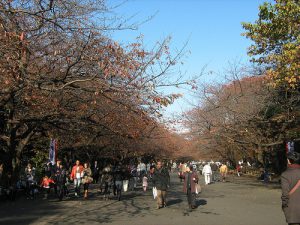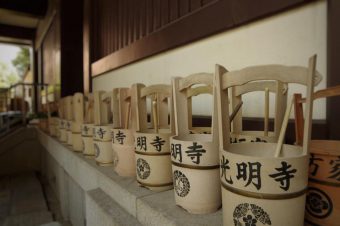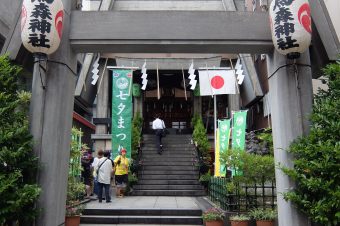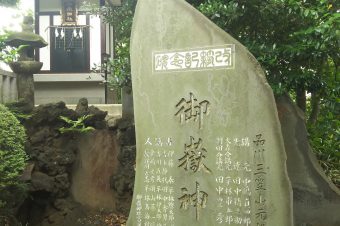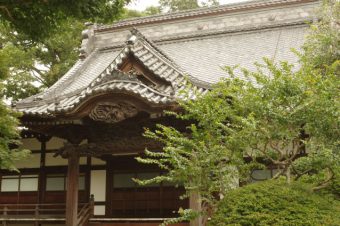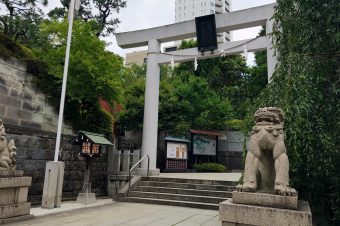Built on a hill close to Ueno Station in Tokyo is Ueno Park. Founded in May 1876, Ueno Park is often considered the first public park in Japan, since then it has developed as a center for celebrating culture and the arts. Consisting of multiple museums, the Ueno Park Zoo and multiple shrines and temples. Ueno has become not only a must visit spot in Tokyo but a cultural institution for the city. However, to fully understand the parks importance you must look back on the park’s vast history.
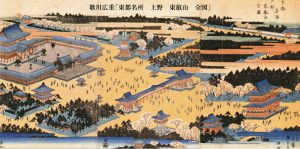 The area that is currently Ueno Park was originally part of the Kan’ei-ji Temple. Founded in 1625, the temple the temple originally functioned as a prayer hall to protect the Ki-mon (“Demon’s Gate”) of Edo Castle, but later became the temple of the Tokugawa family. At its peak, the Kan’ei-ji Temple had over 68 buildings spread across 53,000 square meters. This changed during the battle of Ueno in 1868. During this battle, almost all the temple
The area that is currently Ueno Park was originally part of the Kan’ei-ji Temple. Founded in 1625, the temple the temple originally functioned as a prayer hall to protect the Ki-mon (“Demon’s Gate”) of Edo Castle, but later became the temple of the Tokugawa family. At its peak, the Kan’ei-ji Temple had over 68 buildings spread across 53,000 square meters. This changed during the battle of Ueno in 1868. During this battle, almost all the temple 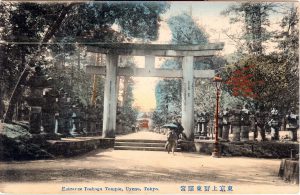 buildings were destroyed by fire. Soon afterward, the temple grounds were opened to the public for cherry blossom viewing, and the temple was registered as one of the first public parks in April 1873. The Ministry of Home Affair’s Museum Bureau started road improvement and other construction works in the park in January 1876. On May 9, 1876, in the presence of Emperor Meiji, a spectacular opening ceremony for the park was held.
buildings were destroyed by fire. Soon afterward, the temple grounds were opened to the public for cherry blossom viewing, and the temple was registered as one of the first public parks in April 1873. The Ministry of Home Affair’s Museum Bureau started road improvement and other construction works in the park in January 1876. On May 9, 1876, in the presence of Emperor Meiji, a spectacular opening ceremony for the park was held.
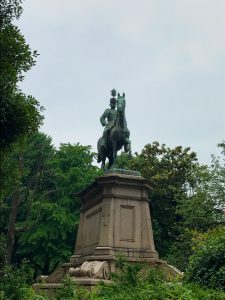 Over time Ueno Park has continued to grow and is still often considered the epitome of culture in Tokyo. When I first visited the park, I was immediately taken back by just how large the park was. My favorite thing about the park is the culmination of Japanese culture that you can find in the park. Not only does the park honor the past through its shrines and temples spread out throughout the park, but at it also honors the culture of present day Japan through its multiple museums. Ueno Park a truly incredible place to visit.
Over time Ueno Park has continued to grow and is still often considered the epitome of culture in Tokyo. When I first visited the park, I was immediately taken back by just how large the park was. My favorite thing about the park is the culmination of Japanese culture that you can find in the park. Not only does the park honor the past through its shrines and temples spread out throughout the park, but at it also honors the culture of present day Japan through its multiple museums. Ueno Park a truly incredible place to visit.
